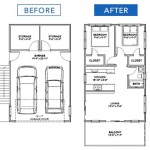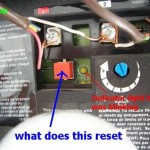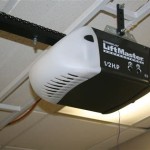How to Organize Your Garage: A Comprehensive Guide
The garage, often intended as a space for vehicle storage and workshop activities, frequently becomes a repository for neglected items and accumulated clutter. Optimizing garage organization is crucial for maximizing usable space, enhancing safety, and improving overall household efficiency. A well-organized garage provides easy access to tools, equipment, and stored belongings, reducing stress and saving valuable time. This article presents a detailed guide on how to effectively organize a garage, covering essential steps, practical strategies, and helpful considerations.
Phase 1: Garage Assessment and Planning
Before initiating the physical organization process, a thorough assessment of the garage's current state is paramount. This involves a comprehensive evaluation of existing contents, available space, and potential storage solutions. A systematic approach at this stage minimizes wasted effort and ensures the implementation of a tailored organizational plan.
The initial step is to remove all items from the garage. This allows for a clear view of the available space and facilitates a more accurate assessment of the volume and type of items needing storage. As items are removed, it is beneficial to group them into categories such as tools, sporting equipment, gardening supplies, seasonal decorations, and miscellaneous household items. This preliminary categorization simplifies the subsequent sorting and discarding phases.
Following the removal of contents, a comprehensive cleaning of the garage interior is recommended. This includes sweeping or vacuuming the floor, wiping down walls and shelving units, and removing any cobwebs or debris. Cleaning enhances the overall environment and provides a fresh start for the organization process. Inspecting the garage structure for any necessary repairs, such as cracks in the walls or ceiling, is also important to address potential maintenance issues proactively.
Once the garage is empty and clean, a detailed inventory of the items to be stored should be conducted. This involves creating a list of each item or category of items, along with an assessment of its size, weight, and frequency of use. This inventory serves as a roadmap for determining the types and quantities of storage solutions required. Consider the long-term storage needs of the household, including future purchases or anticipated accumulation of items.
Based on the inventory and space assessment, a detailed organizational plan should be developed. This plan should outline the intended layout of the garage, including the placement of storage units, work areas, and vehicle parking space. Consider the flow of traffic within the garage and ensure that frequently used items are readily accessible. The plan should also incorporate safety considerations, such as proper ventilation and secure storage of hazardous materials.
Phase 2: Sorting, Decluttering, and Disposal
The next crucial phase involves sorting through the accumulated items, decluttering unnecessary possessions, and disposing of unwanted materials. This process is essential for reducing the volume of items requiring storage and optimizing the use of available space. A systematic approach to sorting and disposal ensures that only essential and useful items are retained.
The first step is to evaluate each item individually and categorize it into one of four categories: keep, donate, sell, or discard. Items designated as "keep" are those that are frequently used, essential, or have sentimental value. Items designated as "donate" are those that are in good condition but no longer needed by the household. Items designated as "sell" are those that have monetary value and can be sold through online marketplaces, consignment shops, or garage sales. Items designated as "discard" are those that are broken, damaged, or no longer usable.
The decision-making process for each item should be based on objective criteria, such as frequency of use, condition, and relevance to current lifestyle. Avoid sentimentality and focus on practicality. If an item has not been used in the past year, it is likely a candidate for donation, sale, or disposal. For items with sentimental value, consider storing them in a designated memory box or creating digital photographs to preserve the memories without physically storing the items.
Once the items have been sorted, the next step is to dispose of unwanted materials responsibly. This includes recycling paper, cardboard, and plastic containers; donating usable items to local charities; and selling valuable items through appropriate channels. For hazardous materials, such as paint, chemicals, and batteries, contact the local waste management agency for proper disposal procedures. Avoid dumping hazardous materials in the trash or down the drain, as this can pose environmental risks.
Before moving on to the storage phase, it is beneficial to organize the "keep" items into subcategories based on their function or purpose. This will facilitate the selection of appropriate storage solutions and ensure that similar items are stored together. For example, tools can be grouped into categories such as woodworking tools, automotive tools, and gardening tools. Sporting equipment can be grouped into categories such as winter sports, summer sports, and recreational sports.
Phase 3: Implementing Storage Solutions
The final phase involves implementing appropriate storage solutions to organize the remaining items effectively. This requires selecting storage systems that maximize space utilization, enhance accessibility, and maintain a clean and organized environment. A variety of storage solutions are available, each with its own advantages and disadvantages. The choice of storage solutions should be based on the specific needs of the household, the available space, and the budget.
Wall-mounted shelving units are an excellent option for storing items off the floor and maximizing vertical space. These units can be used to store tools, gardening supplies, and household items. Adjustable shelving units allow for customization to accommodate items of different sizes and shapes. Consider using clear plastic bins to store smaller items on shelves, as this allows for easy identification of contents.
Overhead storage racks are ideal for storing bulky and infrequently used items, such as seasonal decorations, holiday decorations, and camping gear. These racks are typically mounted to the ceiling and provide ample storage space without taking up valuable floor space. Ensure that the weight capacity of the overhead storage racks is adequate for the items being stored.
Pegboards are a versatile storage solution for organizing tools and hardware. These boards can be mounted on walls and used to hang tools, screwdrivers, wrenches, and other small items. Pegboards allow for easy access to tools and keep them organized and readily available. Consider using pegboard hooks and accessories to customize the storage configuration.
Cabinets provide enclosed storage for protecting items from dust, moisture, and pests. These are suitable for storing sensitive items, such as electronics, documents, and valuables. Cabinets can be freestanding or wall-mounted, depending on the space available. Consider using lockable cabinets to secure hazardous materials or valuable items.
Workbenches provide a dedicated space for completing projects and repairs. A well-organized workbench should include ample work surface, storage drawers, and tool organizers. Consider adding a vise, lighting, and power outlets to enhance the functionality of the workbench. A clear and uncluttered workbench promotes efficiency and safety.
After implementing the storage solutions, take the time to label each storage container and shelf. This will make it easier to locate items in the future and ensure that items are returned to their proper place. Use a label maker or permanent marker to create clear and legible labels. Consider using color-coded labels to further categorize items.
Maintaining the organization of the garage requires ongoing effort and discipline. Establish a routine for regularly decluttering and organizing the garage. At least once a year, conduct a thorough review of the contents and dispose of any unwanted items. Regularly sweep or vacuum the floor to keep the garage clean and free of debris. By following these guidelines, the garage can be transformed into a functional and organized space that enhances the overall efficiency of the household.

How To Organize Your Garage Organizing Tips

15 Tips On How To Organize Your Garage And Reclaim Space

46 Garage Organizing Ideas You Can Diy Family Handyman

How To Organize Your Garage In One Weekend Design Works

How To Organize Your Garage Morganize With Me Morgan Tyree

12 Garage Storage Ideas How To Organize A

How To Organize The Garage Organization Ideas Making Lemonade

How To Organize Your Garage Organizing Tips

How To Organize A One Car Garage 16 Ideas Flowwall

How To Organize Your Garage Tips For Decluttering Value It
Related Posts








